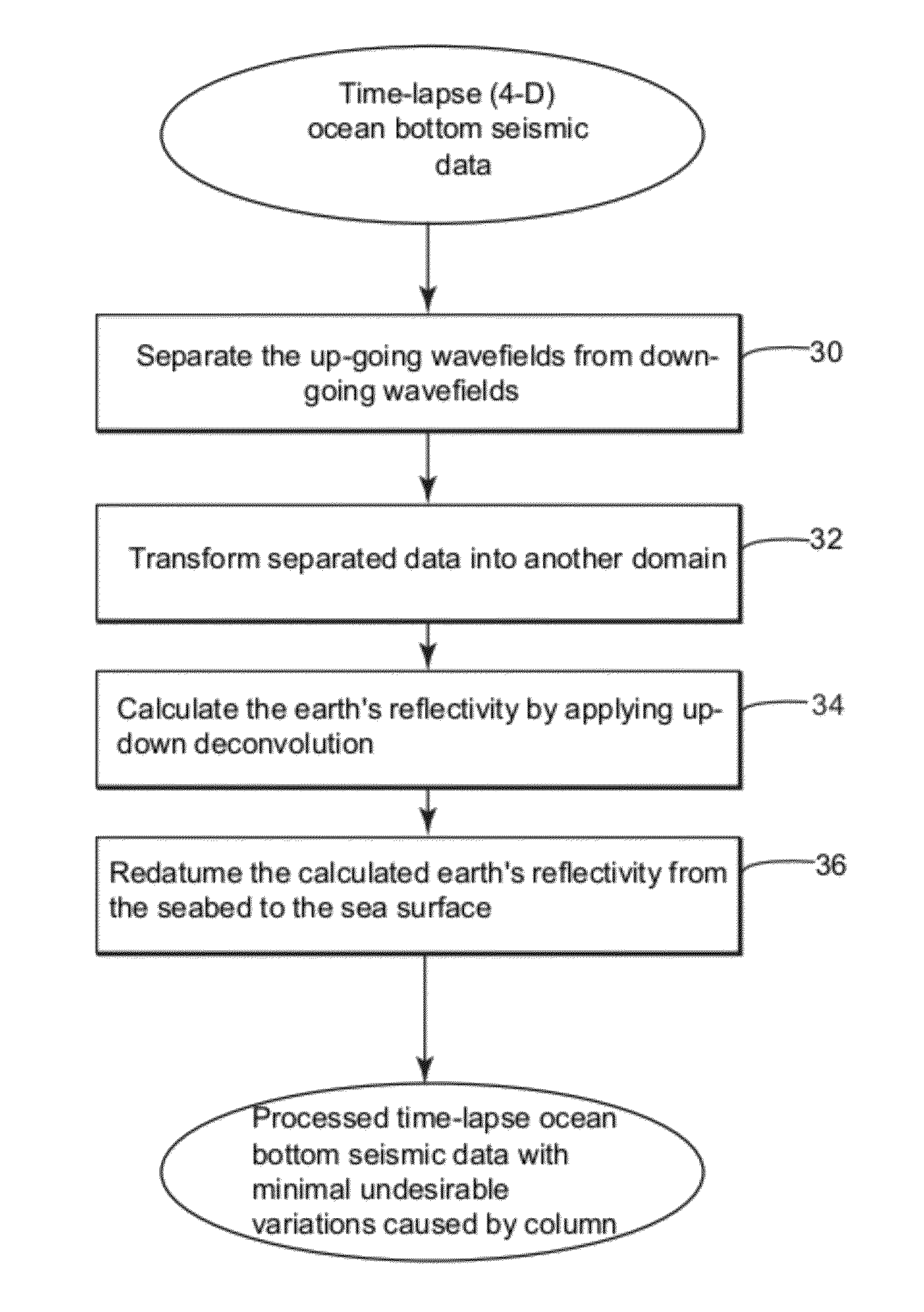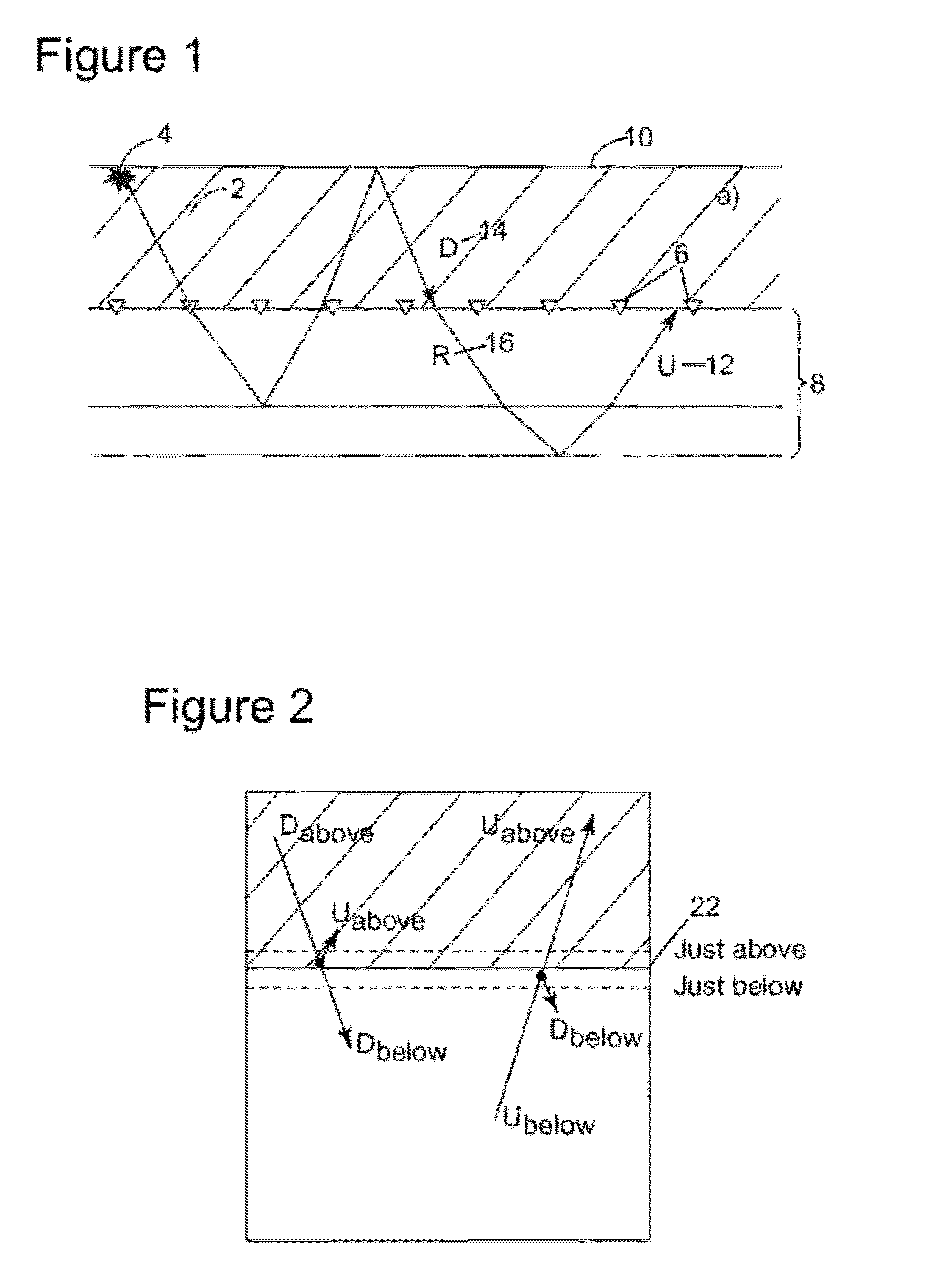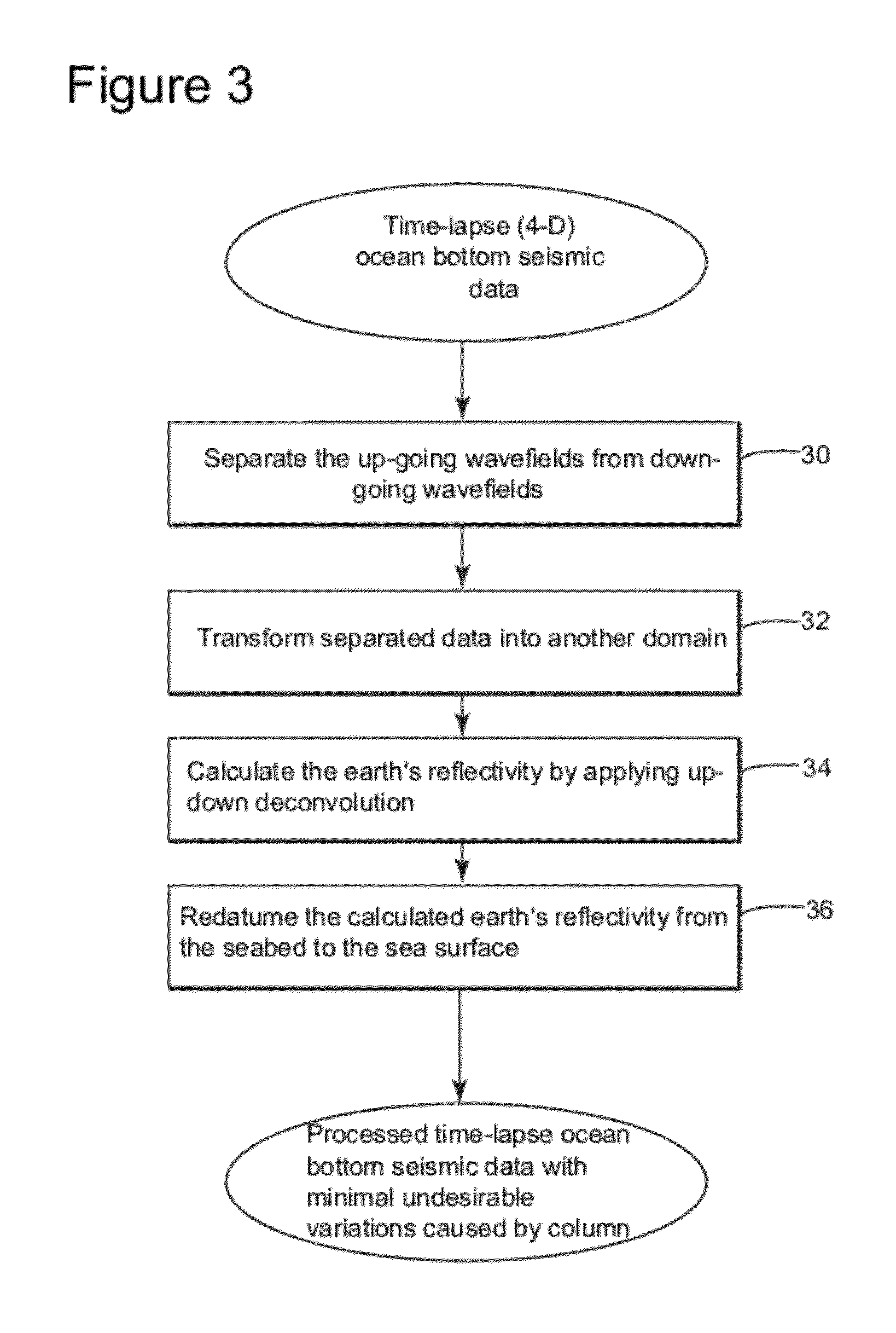Methods and systems to eliminate undesirable variations in time-lapse seismic surveys
a time-lapse seismic and time-lapse technology, applied in the field of geophysics, can solve the problems of difficult to achieve complete repeatability on the source side, difficulty in addressing water column variation problems, and difficulty in obtaining velocity and tide information
- Summary
- Abstract
- Description
- Claims
- Application Information
AI Technical Summary
Benefits of technology
Problems solved by technology
Method used
Image
Examples
Embodiment Construction
[0028]One or more embodiments is directed to a method for minimizing the water column effect from 4-D ocean bottom seismic data by applying up-down deconvolution to 4-D ocean bottom seismic data. The detailed explanation of the mathematical basis of the up-down deconvolution method to address free surface-related water column multiples in a layered media is provided by Amundsen, L., 1993, Wavenumber-based filtering of marine point source data, Geophysics, 58, pp. 1335-1348, which is hereby incorporated by reference. As discussed in the same reference, the method is applicable not only to the pressure and vertical components deconvolution process, but it is also applicable to the horizontal components by replacing the up-going wavefield in up-down deconvolution with the horizontal component of interest. Without loss of generality, the mention of the use of up-down deconvolution in the disclosure is meant to be illustrative and not limiting. It is understood that an exemplary embodime...
PUM
 Login to View More
Login to View More Abstract
Description
Claims
Application Information
 Login to View More
Login to View More - R&D
- Intellectual Property
- Life Sciences
- Materials
- Tech Scout
- Unparalleled Data Quality
- Higher Quality Content
- 60% Fewer Hallucinations
Browse by: Latest US Patents, China's latest patents, Technical Efficacy Thesaurus, Application Domain, Technology Topic, Popular Technical Reports.
© 2025 PatSnap. All rights reserved.Legal|Privacy policy|Modern Slavery Act Transparency Statement|Sitemap|About US| Contact US: help@patsnap.com



